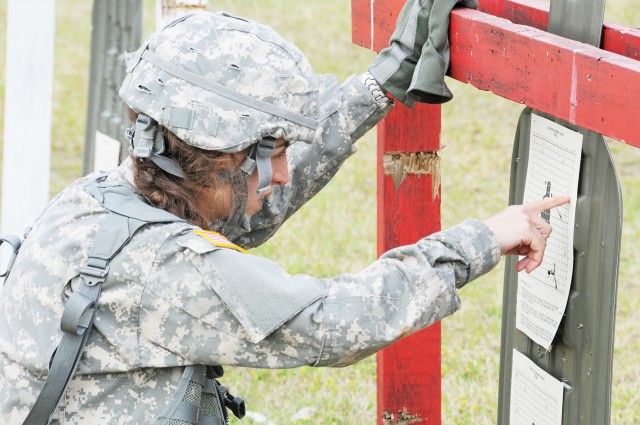
FORT RUCKER, Ala. -- Recent changes to Flight School XXI training condensed course material and expedited the production of pilots, according to officials.
The new Basic Officer Leader Course B replaces training known as BOLC IIIA and B, formerly held here at the beginning and end of flight school. Commissioned officers also no longer have to attend BOLC II, which was conducted at Fort Benning, Ga., or Fort Sill, Okla., according to Maj. Diosabelle Buack, D Company, 1st Battalion, 145th Aviation Regiment commander.
BOLC B, which officially started last October, incorporates basic officer skills - like evaluation reports and career management - weapons qualification, tactical convoy operations, land navigation and more, she said. The course lasts about 34 days, and a new class begins every two weeks.
"It streamlines the pipeline (of flight school). It gets Soldiers out to their units quicker," Buack said.
The only material removed from the combination of the three old courses was simulation training in the Aviation Combined Arms Tactical Trainer, she noted. This was originally conducted in BOLC IIIB after students had completed all aircraft training. It has been removed from BOLC B instruction because its use requires knowledge of advanced airframes.
Buack said the move to combine BOLC IIIA and B at the beginning of flight school was initiated by Maj. Mike Williams, 1st Aviation Brigade operations officer, and Maj. Michael Sines, 1st Bn., 145th Avn. Regt. operations officer.
This act coincided with an order to eliminate BOLC II by Gen. Martin E. Dempsey, commanding general for the U.S. Army Training and Doctrine Command. Aviation is the only Branch to have completed this transition, and all other Army branches are currently in the process of making the switch, according to Capt. Troy Pounds, D Co., 1st Bn., 145th Avn. Regt. executive officer.
BOLC B students receive well-rounded Army training, Buack said, to prepare them "to be both Aviation warfighters and platoon leaders. Regardless of (Soldiers') backgrounds, we're trying to focus on leadership."
One instructor responsible for teaching students basic Army and leadership skills is Sgt. Chris Moore, D Co., 1st Bn., 145th Avn. Regt. platoon trainer. One of his many duties includes qualifying students on 9 mm pistols and M-16 rifles.
BOLC B helps students, who have not previously served, familiarize themselves with how the military works, he noted.
"It helps especially the new lieutenants," Moore said. "In order to be (leaders), they have to know the basics."
Second Lt. Scott Kulifay, a D Co. student, said he went through BOLC II before the switch took place and said he appreciates the mentality of BOLC B because of more Aviation-specific topics. He said he recently learned about vehicle identification, which will help him recognize differences between friendly and enemy vehicles from the air.
Because BOLC B is the melting pot for all commissioned and warrant officers before they begin flying, Kulifay said he is also learning how jobs differ between the ranks and how to coordinate with those individuals to complete tasks.
Classmate WO1 Scott Perry agreed and had nothing but praise for the new program.
"It's well-rounded training," he said. "It gives you proficiency in all areas. I like that it's condensed and fast-paced."

Social Sharing